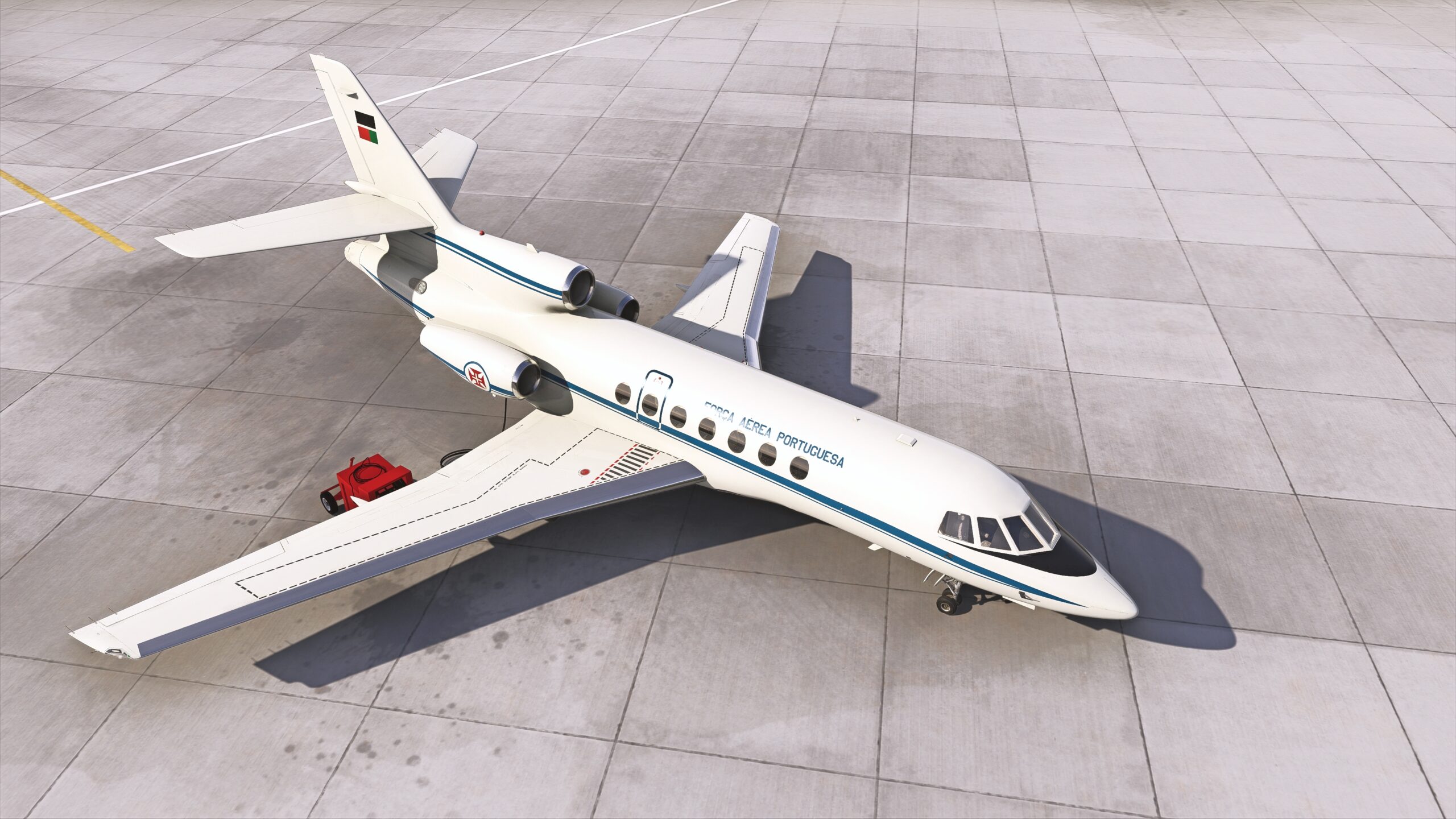The MSFS Dornier Do X is the next local legend in the Microsoft/Asobo series of airplanes deemed ‘historically iconic”. Seeing this majestic feat of German engineering looming large in the water can take your breath away. As you come onboard and take a seat in this environment of new luxury travel, a well-dressed waiter serves you tea and biscuits before your ocean journey begins.
For this review, I will be evaluating the Dornier Do X Airplane for its historical accuracy, simulation of flight dynamics, quality of the rendered model, and operation of its various parts. No flying Do X exists today, but in partnership with a group working on building a non-flying replica, Microsoft/Oliver Moser, has succeeded handsomely at preserving this legendary aircraft in Microsoft Flight Simulator.
Table of Contents

Overview of the Do X Airplane
The Dornier Do X was a flying boat designed by Claude Dornier in 1924 and saw its first flight in 1929. The Do X performed outstandingly well for an airplane of this era. This twelve-engine floating behemoth could travel whole oceans with seventy to one hundred passengers in luxury style, an outstanding feat at the time. It was the largest, heaviest, and most powerful design for an airplane of that era. It set the world record for two decades for the most passengers when it took 169 passengers and crew on a flight to prove a point. It loaded only seventy passengers regularly and flew only 1600 ft above the water during cruise even though it was rated to 10,500 feet.
The twelve motors were each 12 cylinders and mounted in tandem pairs, with one pulling and the other pushing. They each swung a four-blade, fixed-pitch propeller and collectively produced 7,200 horsepower. The Do X had a range of 1,100 miles and cruised at a comfortable 110 mph, although it could ramp up to 150 mph. The thousands of gallons of fuel were contained in the lower deck, and the plane had sponsons mounted on the lower hull to stabilize the Do X in water and act as secondary wings once aloft. The crew consisted of 10 to 14 members, and we will examine the crew positions as we continue further in this review. It mentions in the manual that ‘not every launch attempt proved successful’ and explains that environmental factors played a much more significant role in a plane of this size compared to smaller aircraft.
Home Cockpit Setup for This Review
A home simulator flyer can easily click everything that needs to be touched in the airplane, but many of us have some home cockpit hardware that needs to be mapped to airplane functions. For this review, I used my regular flying system comprised of a HoneyComb Alpha yoke, Bravo throttle quadrant, a Ryzen 9 5900x computer with 32GB RAM, and several dedicated SSD drives for the sim. The graphics card is the Nvidia GeForce RTX 3060, driving three 27-inch AOC monitors. MSFS runs on one of those monitors.
As with all airplanes, you will want to map your controller/yoke and throttle/pedals to similar functions in the plane. Interestingly, your rudder pedals will not manage the water rudder while in the water. A separate wheel in the cockpit is controlled with your mouse for that function.
While Dornier Do X is in the air, your rudder pedals affect the air rudder, and the only other setup would be the throttle lever(s) to all twelve engines, as shown here. Everything else is clickable in this airplane.

Get the Airplane Flying Manual
The Airplane Flying Manual for the Do X can be found in the “Official” folder, not in the “Community” folder as this product is only available via the MSFS Marketplace. You can also find it on the Aircraft Manuals Forum, for those who haven’t bought it yet.
A manual is crucial if you want to learn how to handle any airplane in your simulator with any degree of realism. Learning through discovery is part of the excitement when flying classics or iconic airplanes. The manual is formatted with the home flight simmer in mind. Still, it is certainly not your conventional POH with its defined sections for General, Emergency Procedures, Normal Procedures, and Supplemental information. Those standards were not around in the late 20s. This manual gives us the information we need to confidently handle all aspects of this beast, including many photos, labels, and exact procedures to follow.
- Two pages devoted to “Extra Features,” such as the anchor and the tug boat management.
- Six pages are devoted to “Starting the Engines,” although there is an automatic mode that is simpler for those pressed for time.
- Six pages devoted to “The Cockpit,” complete with diagrams and explanations of every switch, dial, and control at the various stations.
- Six pages devoted to “The Navigation Room” to help us understand the management of all aspects of navigation, complete with an understanding of the various tools and gauges needed back in the day.
- Six pages are devoted to the “Radio Operator Room,” explaining the COM and NAV radios layout, the generator room, and the labels and pictures of every area and console you must visit.
This manual is invaluable in helping us understand the intricacies of this airplane, although not as information-rich as a POH would be. There are no performance charts, checklists, engine handling and management details, or procedures. But it is a very informative document as it is. Without it, a sim pilot would flounder and not think much of the airplane.

Features and Perks
The manual highlights two items in this section: the anchor and the tugboat. There are many other features of this aircraft. I will begin with those two features. The anchor and the tug boat are nice touches, considering this is a water-only aircraft that could easily drift into a marina or rocky shore. The anchor is self-explanatory. When you activate it, you will find a chain and rope at the front of the plane that extends into the water, and your aircraft stays where it is. Remember, though, that it would be docked most conventionally for passenger management. Here in our sim, we can only spawn on water runways and drop an anchor until we get things rolling. Then we need the tugboat to get us into open water before we can think of departing to the skies.
I want to add that there are many other features that the manual doesn’t list under this category, such as textures, modeling, and sounds.
Textures & Modeling
The hi-res textures and aircraft modeling are very well done, complete with realistic weathering effects. The actual hull was built using a special Aluminum alloy called Duralumin back in the day and painted with aluminum paint. To make the sim version of the plane look like this took a lot of work on the developer’s side with great success. Looking closely, I am impressed with the attention to detail as I see the wood grain of propellers, the steel bezels around the passenger portholes, the thousands of rivets all over the plane, and the wear and tear on the engines through constant use. One outstanding feature is the “corrugated aluminum” (Duralumin) main wing, reminiscent of the famous Ford Tri-motor used all over the plane of the same era.

Another feature is the attention to detail in the cockpit and the numerous crew areas of the plane. Easy to read and understand as you flip through the various views in-sim to find them. That, too, is a feature when you test the multiple views from your hat switch or your CTRL-0 to 9 views from the keyboard. It lacks essential views, such as the “Lotsie” (Guide) panel box that controls the anchor and tug boat. There doesn’t seem to be a stock view of that, so you have to zoom in and adjust your screen with cursor keys or mouse to see inside the box and manipulate the anchor and tug boat.


You can go inside each engine nacelles as engineers did back in the day to service them, although you must use your drone camera mode. You can see both engines in the same nacelle, complete with all 12 cylinders for each one. You can also go inside the passenger areas to witness their sitting area, dining area, bathrooms, and kitchens, complete with floral wallpaper, a sign of luxury. The navigator room and the radio room look exactly like the old black-and-white photos of the real plane, although in full color, with all parts working correctly. The instruments do have that black background and brass-ring look to them. I am transported back to the aviation era, where the instrument pointers looked like that in the 20s.
Getting All Twelve Engines Started
There is an easy mode and a realistic mode for the Dornier Do X. Use the easy method for those anxious to take her for a spin. The manual explains this well, and you can have all twelve engines humming along, ready for full power within seconds. I prefer the manual method. After all, I want to witness the whole experience of flying this legend. It is a complicated procedure with a lot of repetition as you have to repeat it for each engine. But it is so rewarding that they included this level of detail, just like the real thing. There is a certain gratification in starting 12 ancient engines and taking to the skies.

Although the manual shows you a picture of the starting switches, it forgets to explain where to find this view. Is it in each engine or somewhere in the aircraft? I did learn by trial and error as I flipped through various views. They should say that in the manual. This is the classic case of the manual author assuming we all know where this is and forgetting that it is not apparent to the neophyte. Examining the airplane with your drone camera is the best solution. Take a walkthrough of the various decks and rooms. Even the fuel tanks below deck are there to appreciate the beast’s size and what could hold 38,000 pounds of fuel. Take your camera up on the wing, further up the engine ladder, and see inside the nacelle of a two-engine configuration, complete with all 12 cylinders in plain view.
How Does It Sound?
Every flight simulator enthusiast realizes that the look of an airplane and the feel of it is the most essential aspect. Still, the accompanying sounds take you to another level of immersion if they are done correctly. This is the case with the Dornier Do X.
Couple that with the environmental sounds from the simulator, and it can transport you to the period where it all happened. Without a real airplane to record their sim sounds, the developer had to take sounds from planes of the era that do exist, such as the Ford Tri-motor. We do not learn where the sounds are recorded, but we can feel that they are authentic by listening to the accompanying sounds as we click each switch, turn each dial, and move each lever. I smile as the creak of the anchor chain accompanies the retrieval of the anchor, and the creak of opening the small metal box to manage the anchor and tug boat is a bonus. The engine sounds alone give you that deep rumble, especially when we get all twelve working together. In real life, reports indicated that it was hard to carry a conversation once they throttled up those 144 pistons. Here are recorded samples of the sounds you can expect:
- At rest near a dock
- Clicking various switches
- Starting up the engines
- Full power for take-off
- The fog horn
Take to the Skies
Now, it was time to test this larger-than-life airplane in the skies. How does she fly? Is It a clunker or a graceful bird to be admired by both the witnesses below and the crew onboard? After the tugboat pulled me out to a straight path for takeoff, it was time to cut the tug and spool up all those pistons for takeoff. Ironically, the Dornier Do X doesn’t measure your airplane rotation by its airspeed, which is bizarre. It measures it by how long you have been barreling down the waterway to get airborne. I recommend not to try taxiing around tight places and to have the tug get you pointed towards a long stretch of water for your takeoff. The manual states you give it full power and pull back to get airborne anywhere from 25 to 67 seconds for takeoff. I found the airspeed was around 150 km/hr to rotate and 167 km/hr to pull away from the water.

The Lotsie summons the tug boat; it pulls in front and connects the tug line. Now, use the speed dial and the left-right controller in the Lotsie to have the tug turn 180° and face the open stretch of water away from the harbor.
You may want to test the “all 12 engines AutoStart” feature to save time manually starting all 12 engines. Ensure you lower the anchor back into the water, as the first engines on the port wing will turn your aircraft around while fumbling with the rest of them. Once you have all the engines running, pull the anchor and be on our way. The manual states you give it full power and pull back to get airborne anywhere from 25 to 67 seconds for takeoff. I found the airspeed was around 150 km/hr to rotate and 167 km/hr to pull away from the water. After applying full throttle and back pressure on the yoke, you could be off the water in 37 seconds.
Take her up at 500 fpm to an altitude of .5 km. Yes, the altimeter is measured in kilometers, and there was no need to go any higher. Remember that in real life, they routinely flew at only 1,600 feet. You may want to fly over Microsoft’s HQ just for fun. This aircraft is easy to manage once it is airborne. If you wish to do upper-level air work, climb to 1km and level off. In testing, a power-off stall will happen at 110 km/hr and will be smooth but abrupt, and you will fall off a wing. A power-on stall will occur around 135km/hr and will mush instead of a wingover, which is expected of aircraft even today. That is certainly a testament to a well-designed airplane. The Engineers for the Dornier Do X knew what they were doing.

The Engine, Navigator, and Radio Rooms
You can visit each airplane workstation during a flight, but it isn’t necessary. Indeed, you can see the engine room now and again to monitor the engine temperatures and other gauges. Still, unless you want to test single-engine failures or watch the various gauges of all twelve engines, there is no need. You will visit the radio room when you want to change frequencies and watch the different CDI needles as you tune them. With full COM 1&2 – NAV 1&2 functionality, you can get comfortable in the radio room with the fascination of this functionality. The Navigator station is pleasing to look at with the map on the table. Still, the only reason to be here is to adjust the Altimeter barometric pressure using the authentic look gauge on the wall or use the electrical panel to activate night lighting throughout the airplane.
Remember that we don’t have auto-pilot in any sense of the word, so other station visits will be brief as you revisit the cockpit to ensure you are on course and trimmed well. Now and then, sit in one of the passenger seats and look out the porthole with your real cuppa in hand. You will smile as you see the world fly by in the modern age of airline flying in 1929.


Back to the cockpit as you near your destination. Descent is easy enough with reduced throttle as you head toward the waters leading up to Renton, the famous Boeing factory that makes the 737 Max today. Of course, you cannot take her up the water ramp to the solid ground as you have no wheels, but you can anchor just off the coast, near their docks—a piece of cake. Reduce your airspeed to no lower than 150 km/hr before touching down on the water. Be gentle on those well-heeled passengers. They wouldn’t want to spill their tea. Engine shutdown can be accomplished with your magneto switch, except one engine kept sputtering and giving off black smoke. You can turn off all red fuel selector valves to solve that—safe and sound.

I recommend you map your red mixture lever to manage all the fuel mixture valves so it is an easy task instead of turning all twelve valves off in a row with your mouse. Bring out the tender and let your passengers free. Typically, you would taxi up to a dock or let a tug boat take me to a dock to exchange passengers, but in MSFS, most docks are not solid, and you sail right through them. Unless you have added scenery that puts in hard docks, you stay farther out and drop anchor. Microsoft has chosen eleven previous “local legends” before this. Each has a place in history and has been meticulously rendered for our enjoyment. Here is a sample of Local Legend #11 and Local Legend #7.



Conclusion
I love this plane. Being able to learn and manage an aircraft of this era is both fascinating and enjoyable. We get to do what pilots and passengers did back in the 20s. The “modern age” of flying as advertised, “complete with bathrooms, dining rooms, and beds,” was the caption. Who wouldn’t want to travel in luxury like that and feel the hum of 12 engines taking you safely to your destination on another continent? It looks like a boat, flies like a plane, and sounds like an ocean liner when you sound the foghorn. This one’s a keeper.
Feel free to join our Discord server to share your feedback on the article, screenshots from your flights or just chat with the rest of the team and the community. Click here to join the server.






